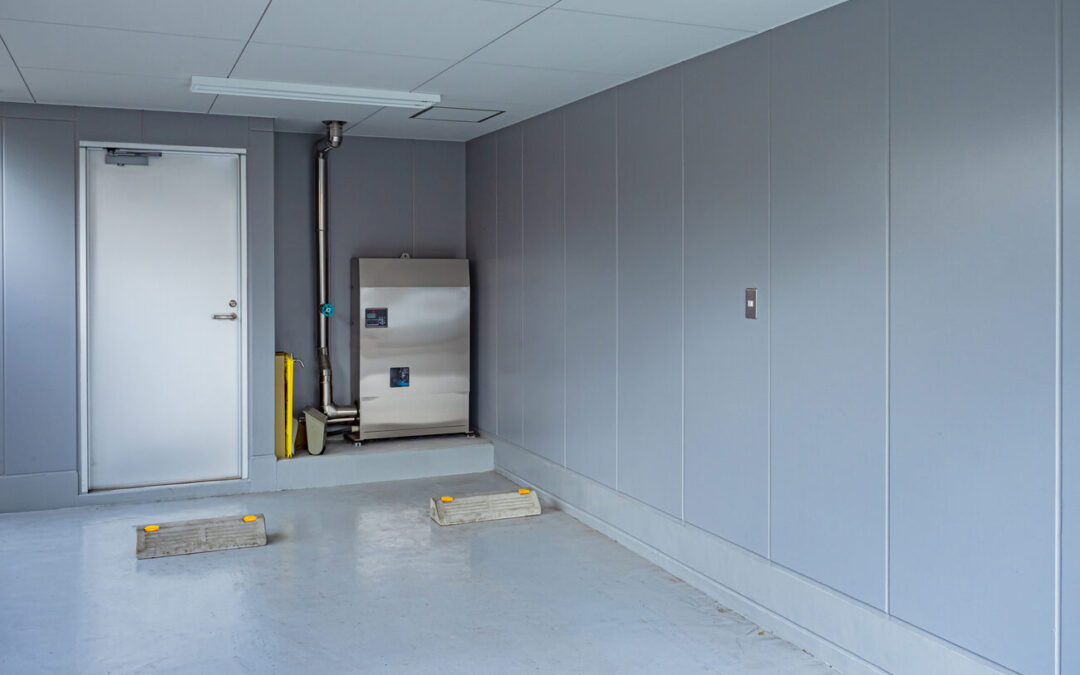The homes and businesses of warmer climates benefit from air conditioning systems, and some call for innovative measures in the quest for cool comfort. In a building with a steam or hot water system, a boiler heats water or another liquid. The heated liquid, or the steam it creates, is then sent into pipes strategically located throughout the building. There is no duct work involved. Consequently, homes that are heated with a hot water or steam system present the challenge of distributing chilled air without the advantage of existing air ducts. Fortunately, this is a challenge that can be accepted and overcome. Many home or business owners do not realize that cooling a home via duct work is only one of many options for air conditioning. There are three workable methods for Adding Air Conditioning To A Boiler.
The least expensive option, starting at $3,500, is a mini split air conditioning system. With this system, the condenser, an essential component in the cooling process is located outside the building and the air handling unit, which controls and moves the chilled air, is secured to the wall inside. An advantage to this system lies in the fact that the home or business owner can select specific areas to cool.
An attic air conditioning system, which carries a higher price tag of $8,000- $15,000, places the air handler in the attic of the home or business, and leaves the condenser outside. Duct work must be installed to move the air, so this system is more costly and installation may be a bit more invasive, but it can cool the entire building, and many consider it money well spent.
The most expensive method, costing $12,000- $20,000, also involves placing the air handler in the attic of a building. This system moves the air through small round tubing. It is a high velocity adaptation of the system that uses ducts. It is efficient, takes up less room than a traditional duct work system, and is very quiet. What’s more, the final results are more aesthetically pleasing, with less disruption to the interior of the building.
There is no need to abandon hope for a comfortable existence when the temperatures climb to uncomfortable levels, and your home is heated with a boiler. These workable options will allow everyone to enjoy the relief of cooled air.
As experienced professionals, we can remove the unknown, and eliminate the stress and worry associated with home improvement projects. Contact us and let us help you on your way to a more comfortable way of life.
Frequently Asked Questions about Adding Air Conditioning to a Boiler-Heated Home
1. Can you add air conditioning to a house with a boiler?
Absolutely! You can add air conditioning to a house with a boiler by using alternatives to traditional ductwork. Options include mini split systems, attic air conditioning systems, and high-velocity systems. These solutions ensure efficient cooling without the need for extensive duct installation.
2. What is a mini split air conditioning system?
A mini split air conditioning system is a cost-effective option for homes with boilers. It consists of an outdoor condenser and an indoor air handling unit mounted on the wall. This system allows for targeted cooling in specific areas, offering flexibility and efficient cooling without the need for ductwork.
3. How does an attic air conditioning system work?
An attic air conditioning system places the air handler in the attic and the condenser outside. It uses ductwork to distribute cool air throughout the building. Though more expensive and invasive to install, it can effectively cool an entire home, making it a popular choice for those looking to enhance comfort.
4. What is a high-velocity air conditioning system?
A high-velocity air conditioning system uses small, flexible tubing to distribute air. The air handler is placed in the attic, and the system is designed to be efficient and quiet. It is aesthetically pleasing with minimal disruption to the interior, though it is the most expensive option, costing between $12,000 and $20,000.
5. Is adding air conditioning to a boiler-heated home worth the investment?
Yes, adding air conditioning to a boiler-heated home is a worthwhile investment. It enhances comfort during hot weather, increases property value, and provides a more pleasant living environment. The initial cost can be high, but the benefits of improved air quality and comfort make it a smart long-term decision.
6. Can a mini split system cool an entire house?
While a mini split system is ideal for cooling specific areas, multiple units can be installed to cool an entire house. This approach allows for zoned cooling, providing customized comfort in different rooms and saving energy by cooling only the areas in use.
7. How much does it cost to install an attic air conditioning system?
Installing an attic air conditioning system typically costs between $8,000 and $15,000. The price varies based on the size of the home, the complexity of the installation, and the specific equipment used. Despite the higher cost, it offers comprehensive cooling for the entire building.
8. What are the benefits of a high-velocity air conditioning system?
A high-velocity air conditioning system offers several benefits, including efficient cooling, quiet operation, and minimal impact on interior aesthetics. Its small, flexible tubing requires less space than traditional ductwork, making it an excellent choice for retrofitting older homes with boilers.
9. How do I choose the best air conditioning system for my boiler-heated home?
To choose the best air conditioning system for your boiler-heated home, consider factors like budget, installation complexity, and cooling needs. Mini split systems are cost-effective for targeted cooling, attic systems offer whole-house cooling, and high-velocity systems provide efficient and unobtrusive cooling.
10. What maintenance is required for these air conditioning systems?
Regular maintenance for these air conditioning systems includes cleaning or replacing filters, checking refrigerant levels, inspecting and cleaning coils, and ensuring the outdoor unit is free of debris. Annual professional inspections can help maintain efficiency and extend the system’s lifespan.



